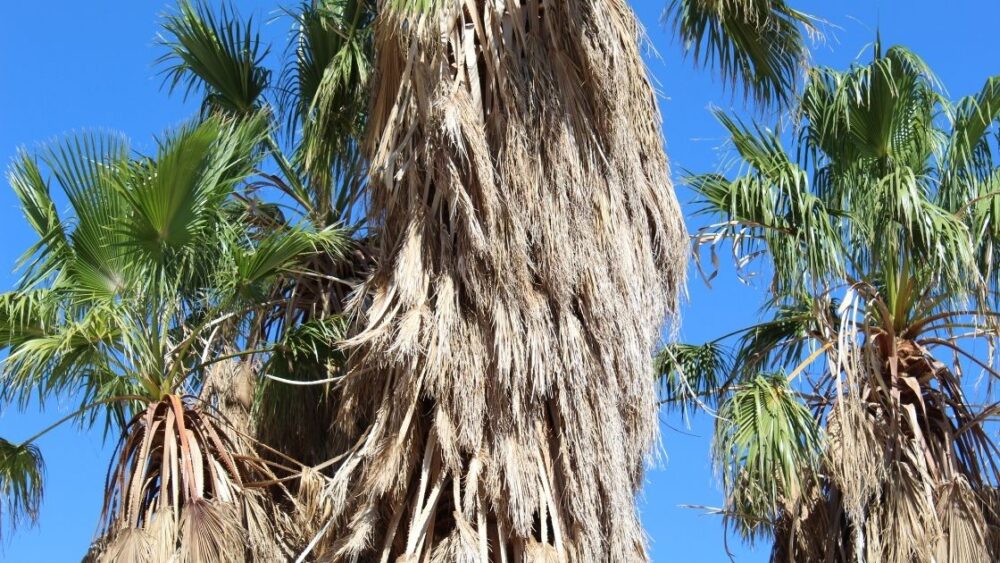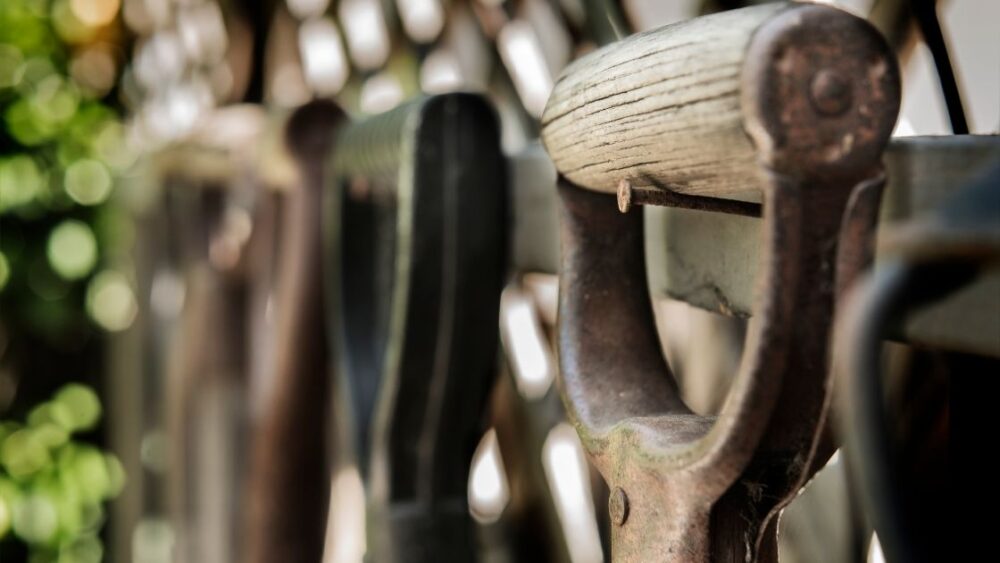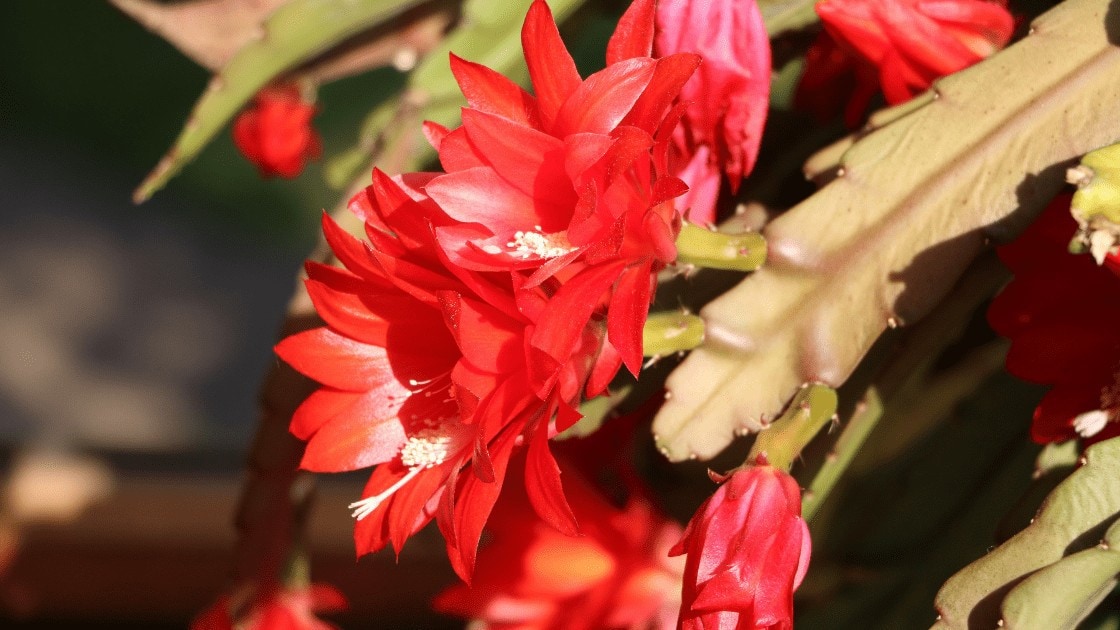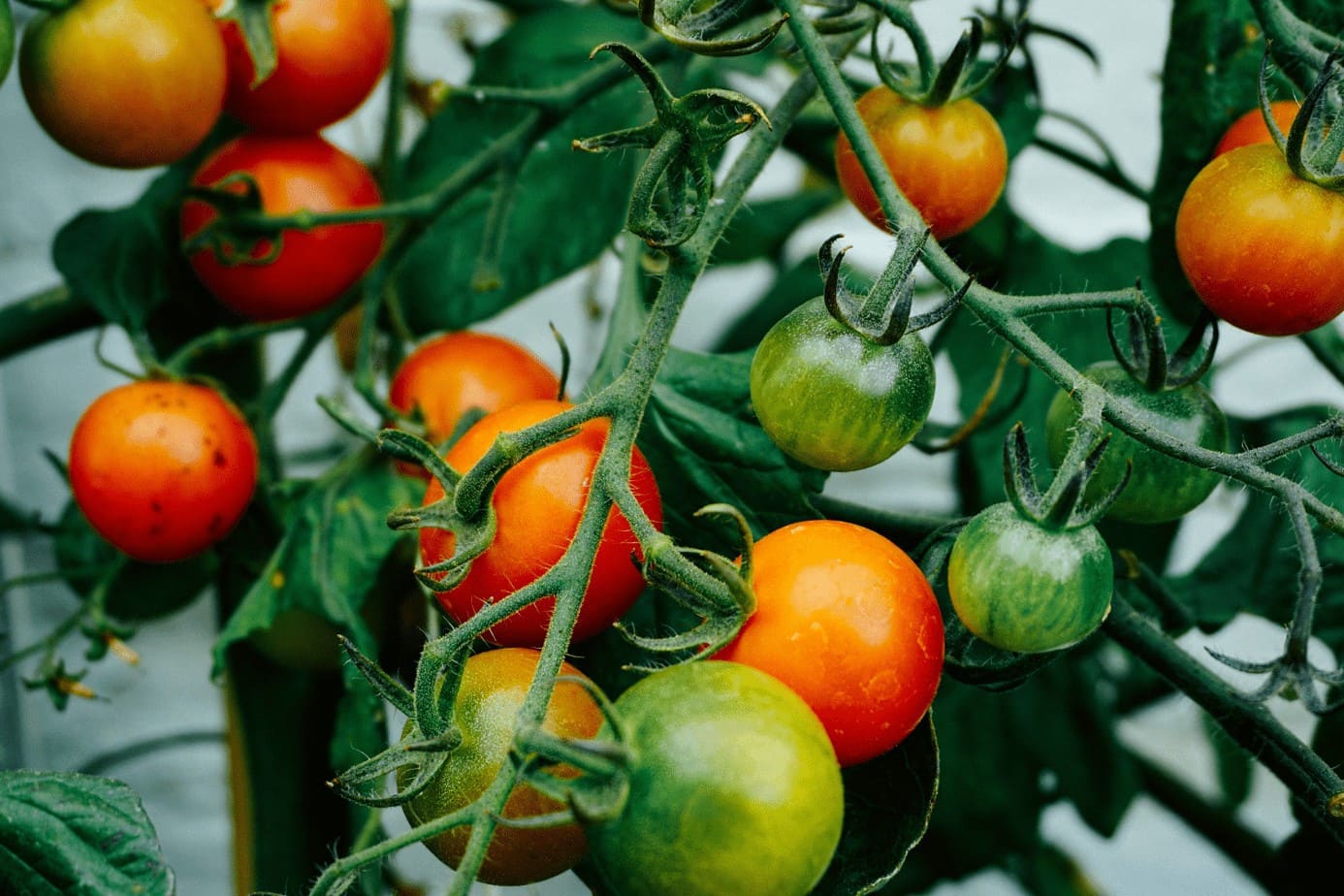
Magnificent, tolerant, and fast-growing, the Mexican Fan Palm is an attractive tree with broad fan-like leaves that can span up to five feet in width. Once established, this classic-looking palm tree thrives in full sun and requires little water. They are perfect for landscapes and is frequently found in and along roadways, where it can grow to its full height. Keep reading to learn more about the care tips, pros, and cons of growing this ornamental tree, as well as what makes it unique.
About the Mexican Fan Palm Tree
The Mexican fan palm, also referred to as the Washington palm, petticoat palm, or sky duster, is one of the fastest-growing palm tree varieties native to Northern Mexico. The tree is hardy in USDA zones 9a through 11b and Sunset zones 8 through 24. It is widely cultivated in Arizona, Texas, Georgia, California, and Florida.
- Under ideal conditions, the sky duster can reach a height of 80 to 100 feet and have leaves as wide as 5 feet.
- A mature Washington palm’s trunk is thin and tapered, with a diameter of 2 feet at the base and 8 inches at the top. It is typically reddish-brown in the early stages but gradually fades to gray.
- The Washingtonia palm tree is also known to have a very long life and can potentially live for 500 years.
These trees have frond spreads that range from 12 to 15 feet and form a crown that is slightly taller than it is wide. The Mexican Fan Palms’ alternate name, petticoat palm, comes from the fact that the fronds continue to grow on the tree even after they die, creating a thick, brown, shaggy covering, or “Hula Skirt,” below the crown.
Browse our Affiliate Products
How Do You Care for a Mexican Fan Palm Tree?
The Mexican fan palm tree is generally considered an easy-to-care-for plant. It tolerates poor soil and drought and thrives in hot, dry environments where its tall stature is not hampered. It can withstand temperatures as low as 18 degrees Fahrenheit for short periods. A prolonged cold, on the other hand, will kill even mature trees.
Consider the following requirements to ensure the proper care of your Washington palm tree:
- Lighting: Partial shade to full sun. Allow plenty of space, and don’t plant it near buildings or power lines.
- Planting: Mexican fan palms adapt well to well-drained soils and show little preference for any specific amount of soil acidity. Be sure to dig a wide planting hole and give your Mexican fan palm plenty of water during the planting process.
- Watering: Despite being a drought-tolerant plant, the Mexican fan palm requires a lot of water during the first three months of growth. Once established, water it every 5-10 days during the summer, spring, and fall. Keep the plant dry during the winter.
- Fertilizing and nutrition: Depending on your region and the season, replenish it every one to two months with a mild palm-friendly organic fertilizer or compost.
Mexican Fan Palms have few nutrient issues. The only known common issue is potassium deficiencies, which results in leaf discoloration and the early mortality of the oldest leaves. Removing discolored leaves should be avoided since doing so may cause the tree to lose potassium when the soil’s potassium supplies are insufficient.
If your interested in another type of palm tree, check out this article. Majesty Palm: (Care and Common Problems)
The Advantages of Growing Mexican Fan Palm Trees

They provide instant landscaping
The Mexican fan palm trees have a beauty that can suddenly turn a dirt patch into an oasis. They are some of the few trees that can stand on their own without the assistance of other plants and yet produce a well-rounded appearance.
They impart a tropical, resort-like atmosphere to any garden or environment. These trees can lend a natural touch to multi-story residences and make a striking statement in expansive settings. The palm tree is best suited for large homes, roadways, and gardens that want to add vertical effects.
Minimal upkeep required
The best part is that Mexican fan palms are carefree and can withstand harsh environmental circumstances like drought. It only has to be planted; the sun and rain will take care of the rest. You won’t need to move a muscle when it comes to the Mexican fan palm.
Make sure to apply high-quality palm fertilizer twice a year during the growing season using a continuous release mix to prevent nutritional shortage.
Tolerant to a range of conditions
Mexican fan palms are renowned for their toughness. They can survive in a range of soil conditions, including sand, clay, and loam, and are salt- and drought-tolerant.
Although the Mexican fan palm can tolerate a wide range of PH, it grows best in less acidic soil.
The Disadvantages of Growing Mexican Fan Palm Trees

The Mexican fan palm is a hardy plant with minor development problems that, if properly cared for, are nonexistent. These few drawbacks of include:
They are not the best palms for residential areas.
Because of their large size, Mexican fan palm trees aren’t suited for gardens or small backyards and can grow almost anywhere. For the most part this can be desirable, but these palms can be imported in mulch and can self-seed. If they are not eliminated, they can also be a breeding ground for rats and mice once they reach a certain size. Just be aware of where you purchase or get your mulch for planted areas and can true for other unwanted seeds and invasive wees and plants.
Can be a fire hazard
The dead leaves of this tree are highly flammable if left without pruning. That is why it is so critical for you to remove the leaves as soon as they have died. Neglecting to prune could prove to be detrimental if the leaves catch fire.
The tree’s advantage is that once it reaches about 30 feet (9 m.) in height, it often begins to naturally drop its dead leaves, eliminating the need to prune away old growth. If the palm grows to this size and dries out, they can become very flammable due to their natural fibers.
Unsuitable for hurricane-prone areas
Mexican fan palms run the risk of breaking and uprooting during severe storms more than other palm species.
Conclusion
The Mexican fan palm is an excellent choice for adding an instant tropical, resort-style look to your landscape. They make particularly striking displays when planted in groups and at equal intervals against high-rise buildings and alongside boulevards, respectively.
The fronds of the Mexican Fan Palm catch the eye of guests and neighbors alike, spreading in an elegant fan silhouette with lush, light green foliage.













